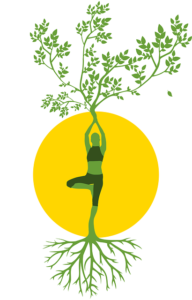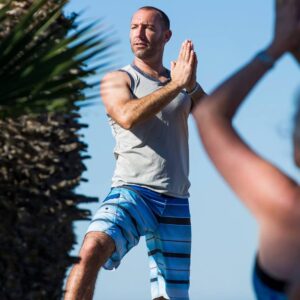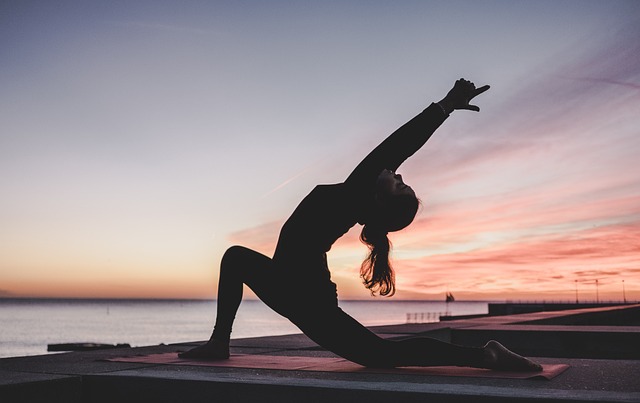Image by Derek Wolfgang
Yoga: Unveiling the Path to Physical and Mental Well-Being
In today’s fast-paced world, where stress and anxiety have become an integral part of our lives, it is crucial to find a balance between our physical and mental well-being. Yoga, an ancient practice originating from India, has gained immense popularity over the years for its ability to promote overall wellness. This guide aims to explore the various types of yoga, including Kundalini yoga, Hatha yoga, Yoga nidra, Hot yoga, Yin yoga, Yoga asanas, Yoga poses, Aerial yoga, and Tantric yoga. We will delve into the history of yoga, its benefits, differences from meditation, principles, starting points, flexibility concerns, recommended frequency and duration, appropriate attire, necessary equipment, and the diverse styles of yoga.
What is Yoga?
Yoga is a holistic practice that combines physical postures (asanas), breathing exercises (pranayama), meditation, and ethical principles to achieve harmony between the mind, body, and spirit. It is not merely a form of exercise but a way of life that promotes self-awareness and inner peace. The word “yoga” is derived from the Sanskrit word “yuj,” which means to unite or join, emphasizing the connection between body, mind, and soul.
Yoga Popularity
Yoga’s meteoric rise in popularity can be attributed to various factors, but perhaps its potent healing effects have played a pivotal role. With the modern world becoming increasingly fast-paced and stressful, people have been gravitating towards activities that offer solace and respite. Yoga provides a sanctuary where individuals can detach from their worries and find inner peace amidst chaos. The ability to destress not only contributes to overall wellness but also fosters a sense of physical and emotional rejuvenation.
Furthermore, yoga has managed to captivate millions by infusing an element of fun into fitness routines. Gone are the days of mundane workouts—yoga introduces novelty through its diverse array of poses and sequences. From mastering intricate balances to embarking on invigorating flows, practitioners embark on a journey that is both challenging and enjoyable. Its potential for personal growth attracts people from all walks of life who appreciate being part of a community that embraces individual progress rather than competition.
In addition to its healing properties and fun-filled nature, one cannot ignore the calming effect that yoga has on the mind. In our hectic lifestyles, finding moments of tranquility may seem elusive, but yoga offers a mindful practice rooted in breathing techniques and meditation. By focusing on breath control during each pose, yogis learn to cultivate patience and stillness within themselves. This intentional shift towards mindfulness leads to mental clarity—a much-needed escape from the constant bombardment of information in our technology-driven era.
Yoga History
The origins of yoga can be traced back over 5,000 years to ancient India. It was developed as a spiritual practice by the Indus Valley civilization and later refined by the sages and yogis. The oldest known text on yoga is the Rigveda, which mentions the practice of controlling the breath and the mind. Yoga philosophy was further codified in Patanjali’s “Yoga Sutras” around 400 CE. From its ancient roots, yoga has evolved into various styles and practices to cater to different needs and preferences.
Yoga and the Mind and Body Connection
 The practice of yoga goes far beyond the physical postures and stretches. It is a profound way to establish a deep connection between the mind and body, ultimately leading to a harmonious balance between these two crucial elements of our being. Through breath work, meditation, and conscious movement, yoga allows us to become more present in the moment and aware of our bodies’ sensations and needs.
The practice of yoga goes far beyond the physical postures and stretches. It is a profound way to establish a deep connection between the mind and body, ultimately leading to a harmonious balance between these two crucial elements of our being. Through breath work, meditation, and conscious movement, yoga allows us to become more present in the moment and aware of our bodies’ sensations and needs.
When we step onto our yoga mats, we ground ourselves in the present moment, leaving behind worries about the past or anxieties about the future. The practice encourages us to pay attention to how each pose feels in our bodies and listen closely to our breath as it flows through us. In this state of mindfulness, we cultivate self-awareness and develop an intimate understanding of the intricate connections within ourselves – physically, mentally, and emotionally.
Yoga teaches us that when we align our movements with our breath, magic happens. We unlock stagnant energy within us while cultivating strength and flexibility in both mind and body. This profound connection transcends the boundaries of the mat; it becomes a way of living – an approach to life where every action is performed with intentionality. Through practicing yoga regularly, we learn how deeply interconnected all aspects of ourselves truly are – paving the way for holistic well-being on every level.
Yoga Benefits
The benefits of yoga extend far beyond physical fitness. Regular practice can improve flexibility, strength, and posture while reducing stress, anxiety, and depression. It enhances mental clarity, concentration, and overall well-being. Yoga also promotes better sleep, boosts the immune system, improves digestion, and increases energy levels. Moreover, it can aid in weight loss, balance hormones, and alleviate chronic pain. The profound benefits of yoga make it an appealing choice for people of all ages and fitness levels.
How can Yoga Help Manage Stress?
Yoga, with its deep-rooted philosophy and practices, can be a powerful tool in managing stress. Its combination of physical postures, breathing exercises, and meditation techniques allows the individual to tap into their inner resources and find tranquility amidst the chaos of daily life. Through regular practice, yoga promotes relaxation by activating the parasympathetic nervous system and calming the fight-or-flight response.
One of the key ways yoga helps manage stress is by cultivating mindfulness. As we move through different poses on our mat, focusing on our breath and tuning into our body’s sensations, we bring ourselves into the present moment. This mindful awareness trains us to let go of worries about the past or future, grounding us in the now. By developing this skill through yoga practice, we become better equipped to handle stressful situations off the mat.
Additionally, yoga encourages self-care and self-compassion. It teaches us to listen to our bodies’ needs and honor them without judgment or criticism. In a society that often glorifies busyness and neglects self-care practices, yoga offers a gentle reminder that taking care of ourselves is not selfish but essential for overall well-being. By prioritizing self-care through regular yoga sessions, individuals can create a sanctuary for themselves where they can recharge their batteries and reduce stress levels.
Incorporating yoga into our lives can have profound effects on managing stress levels.
How can Yoga Help me Improve my Sleep?
Yoga is not only a practice for the body but also for the mind, and this ancient discipline can work wonders for improving your sleep. One of the key reasons why yoga helps with sleep is its ability to reduce stress. Through deep breathing and gentle stretching, yoga activates our parasympathetic nervous system, which promotes relaxation and helps us unwind before bedtime. By incorporating calming poses into our routine such as child’s pose or legs-up-the-wall, we release tension from our muscles and create a soothing environment for better sleep quality.
Furthermore, practicing yoga regularly can aid in regulating our internal body clock, known as the circadian rhythm. Many yoga flows include inversions like shoulder stand or downward dog, which increase blood flow to the brain and stimulate the pineal gland. This gland plays a crucial role in regulating sleep patterns by producing melatonin – the hormone responsible for promoting restful sleep. Additionally, consistent yoga practice has been found to deepen our breathing capacity over time, resulting in improved oxygen intake during sleep and potentially reducing symptoms of common sleep disorders such as snoring or insomnia.
Incorporating just 15-20 minutes of gentle yoga into your nightly routine can have profound effects on your overall sleep quality. Through its unique combination of physical postures, breathwork, and mindfulness practices, yoga offers a holistic approach to improving both mental and physical well-being – factors that contribute significantly to restorative rest at night.
How is Yoga Different from Meditation?
While yoga and meditation share common goals of promoting inner peace and self-awareness, they differ in their approaches. Yoga incorporates physical postures, breathing techniques, and meditation as a comprehensive practice. It involves engaging the body in various poses to prepare the mind for meditation. On the other hand, meditation focuses solely on stilling the mind and achieving a state of deep relaxation and mindfulness. Both practices complement each other and can be integrated into one’s routine to achieve optimal mental and physical well-being.
Do I Have to Practice All the Principles of Yoga to Benefit from It?
No, you do not need to practice all the principles of yoga to experience its benefits. Yoga is a versatile practice that can be tailored to individual needs and preferences. While some practitioners may choose to incorporate the ethical principles of yoga, such as non-violence, truthfulness, and self-discipline, into their daily lives, others may focus primarily on the physical aspect of yoga through asanas and pranayama. The key is to find a balance that suits your goals and lifestyle.
I’ve Never Done Yoga Before…How Do I Start?
Starting a yoga practice can be both exciting and overwhelming for beginners. It is advisable to begin with a beginner-friendly yoga class or seek guidance from a certified yoga instructor. They can teach you the basics, proper alignment, and help you understand the breathing techniques. YouTube tutorials and online resources can also be helpful, but it is encouraged to practice under the guidance of an experienced teacher to avoid injuries and ensure correct form.
Can I Do Yoga If I’m Not Flexible?
Absolutely! Flexibility is not a prerequisite for practicing yoga. In fact, yoga can help improve flexibility. The beauty of yoga lies in its inclusivity, as it offers modifications and variations for every level of flexibility. As a beginner, it is essential to listen to your body, respect its limits, and gradually work towards increasing flexibility. With consistent practice, you will notice a significant improvement in your flexibility, strength, and overall well-being.
How Often and for How Long Should I Do Yoga?
The frequency and duration of your yoga practice depend on your personal goals, schedule, and fitness level. Ideally, practicing yoga for at least three times a week can yield noticeable benefits. However, even a short daily practice of 15-30 minutes can be beneficial. It is essential to find a balance that works for you, ensuring consistency without overexertion. As you progress, you can gradually increase the duration and intensity of your practice.
What Should I Wear to Yoga?
Comfortable clothing that allows free movement is recommended for yoga practice. Opt for breathable fabrics that absorb sweat and allow the skin to breathe. Stretchy leggings or yoga pants, along with a supportive sports bra or comfortable top, are popular choices. Avoid loose or baggy clothing that may interfere with your movements or distract you during practice. Remember, the focus should be on comfort and ease of movement.
What Equipment Do I Need for Yoga?
The equipment required for yoga is minimal, making it an accessible practice for all. A yoga mat is the most essential item, providing traction, cushioning, and stability during poses. It is advisable to invest in a good-quality, non-slip mat that suits your needs. Other optional props include blocks, straps, bolsters, and blankets, which can aid in achieving proper alignment and providing support during challenging poses. These props can be gradually incorporated into your practice as you progress.
What Should I Eat Before My Yoga Practice?
When it comes to fueling your body before a yoga practice, it’s important to choose foods that provide sustained energy without weighing you down. Opt for some easily digestible snacks that are rich in carbohydrates and low in fat. For instance, a banana with almond butter can give you that quick burst of energy needed to power through your flow. Alternatively, if you prefer something lighter, try a bowl of mixed berries topped with Greek yogurt for a refreshing pre-yoga treat.
If you find yourself practicing yoga early in the morning, consider incorporating whole grain options into your breakfast routine. A simple avocado toast on whole wheat bread provides complex carbohydrates and healthy fats that keep you feeling satisfied throughout your practice. Experimenting with small portions of plant-based protein sources like tofu or tempeh can also be beneficial if you’re looking for added nutrients and muscle support during more intense sessions. Remember, the key is finding what works best for your body and honoring its individual needs as you step onto the mat. Trust yourself to make mindful food choices as part of nourishing not only your physical self but also enhancing the spiritual connection during your yoga journey.
Choosing the right pre-yoga snacks or meals can enhance both your physical performance and mental clarity on the mat. Stay away from heavy, greasy foods that may leave you feeling sluggish and lethargic, instead embracing lighter options packed with nutritious goodness to sustain you throughout each pose.
What Are the Different Styles of Yoga?
Yoga offers a diverse range of styles, each with its unique focus and benefits. Some popular styles include Kundalini yoga, which emphasizes awakening the dormant energy within; Hatha yoga, a gentle and balanced practice suitable for beginners; Yoga nidra, a guided meditation technique for deep relaxation; Hot yoga, performed in a heated room to enhance flexibility and detoxification; Yin yoga, a slow-paced style that targets deep connective tissues; Aerial yoga, where poses are performed using suspended hammocks; Tantric yoga, which combines physical postures, breathwork, and meditation to enhance spiritual awakening. Each style has its own appeal and can be explored based on individual preferences and goals.
How do I Choose the Right Yoga Style for Me?
When it comes to choosing the right yoga style for you, there are several factors to consider. First and foremost, think about your personal goals and what you hope to achieve with your practice. Are you looking to increase flexibility, build strength, reduce stress, or simply find balance in your life? Each yoga style offers different benefits, so it’s important to choose one that aligns with your intentions.
Next, consider your physical condition and any limitations you may have. If you’re recovering from an injury or dealing with chronic pain, a gentle or restorative yoga class may be the best option for you. On the other hand, if you’re looking for a more intense workout and enjoy challenging yourself physically, a power or vinyasa yoga class might be more suitable.
Lastly, don’t overlook the importance of finding an instructor who resonates with you. A great teacher can make all the difference in how much you enjoy your practice and how motivated you are to continue learning and growing. Take some time to research different instructors in your area or online and read reviews from their students. You’ll want someone who not only has experience but also has a teaching style that speaks to you personally.
Remember that choosing the right yoga style is ultimately about finding one that brings joy and fulfillment into your life. Don’t be afraid to try out different styles until you discover the one that feels like home on your mat.
Final Thoughts
Yoga is a transformative practice that offers a holistic approach to physical, mental, and spiritual well-being. Whether you choose Kundalini yoga, Hatha yoga, Yoga nidra, Hot yoga, Yin yoga, or any other style, the benefits are profound. By incorporating yoga into your routine, you embark on a journey towards self-discovery, inner peace, and a healthier lifestyle. So, roll out your yoga mat, take a deep breath, and embrace the transformative power of yoga. Namaste!

Yoga Resources
Experience the expertise of Delia Carreon, a Yoga expert, Certified Wellness Specialist, and health coach. Join her on Bliss Planet for a transformative journey towards holistic well-being.

Immerse yourself in the beauty of the ocean while practicing yoga with Steve Hubbard. Join his live online classes every Tuesday and Thursday at 9am, as well as on Saturday and Sunday at 10am @ Namasteve Yoga. Experience the magic of connecting mind, body, and soul amidst the breathtaking Pacific Beach scenery.







Yoga is more than just an exercise routine; it’s a fun and healing practice that can transform your whole being. When you step onto your mat, you enter a world that encourages self-expression and exploration. As you flow through different poses, you become fully present, leaving behind the worries of the day. The joy of practicing yoga comes from embracing the playfulness within each movement and finding peace in the stillness.
Beyond its physical benefits, yoga also has a profound impact on our emotional well-being. It invites us to let go of tensions stored in our bodies and release any negative thoughts or emotions we may be holding onto. Through breathwork and mindfulness, we learn to connect with our inner selves, cultivating self-acceptance and compassion. This transformative journey not only heals our bodies but also nourishes our spirits, leaving us feeling refreshed, rejuvenated, and ready to face whatever comes our way.
So roll out your mat and dive into this joyful exploration of body mind connection! Discover the wonders of laughter during playful yoga classes or explore softer practices like restorative yoga for deep relaxation. With each pose that challenges your strength or stretches your flexibility, remember to approach it with a light heart – after all, when we have fun with our practice, healing becomes natural! Whether it’s through invigorating flows or gentle holds in yin yoga sessions, let yourself be guided by curiosity as you uncover new depths inside yourself – both physically and mentally – making every step along this yogic journey both delightful
Yoga is a form of exercise that can be beneficial for both your mental and physical health. It can help to improve your mood and reduce stress, and it can also help to increase your flexibility and strength. There are many different types of yoga, so you can find a style that suits you.
Yoga can be beneficial for your physical health in many ways. It can help to improve your flexibility and strength, and it can also help to reduce your risk of injuries. Yoga can also help to improve your posture and to reduce pain in your back, neck and shoulders.
The benefits of yoga go beyond the physical. Yoga can also help to improve your mental health. It can help to reduce stress and anxiety, and it can also help to improve your mood. Yoga can also help you to sleep better and to feel more relaxed.
Yoga is a powerful modality for natural healing because it addresses the mind, body, and spirit on a holistic level. Yoga postures (asanas) stretch and strengthen the body, improve flexibility and range of motion, and promote circulation. Yoga breathing exercises (pranayama) help to calm the mind, reduce stress, and improve focus. Yoga meditation helps to cultivate mindfulness and inner peace.
Yoga has been shown to be beneficial for a wide range of conditions, including:
Yoga is a safe and effective therapy for people of all ages and fitness levels. It is a gentle and supportive way to promote overall well-being.
Here are some of the specific ways that yoga can help with natural healing:
Overall, yoga is a powerful modality for natural healing because it addresses the mind, body, and spirit on a holistic level. Yoga can help to reduce stress, improve mood, promote relaxation, reduce pain, improve sleep quality, boost the immune system, and improve cognitive function.
If you are interested in trying yoga for natural healing, there are many different types of yoga available. You can find yoga classes that are specifically designed for healing purposes. You can also find yoga teachers who specialize in therapeutic yoga.
It is important to find a yoga teacher who is qualified and experienced. You should also feel comfortable with the yoga teacher and their approach to yoga.
If you are new to yoga, it is a good idea to start with a beginner class. You can gradually increase the difficulty of your yoga practice as you become more comfortable.
Yoga is a wonderful way to promote overall well-being and to heal from a variety of conditions.